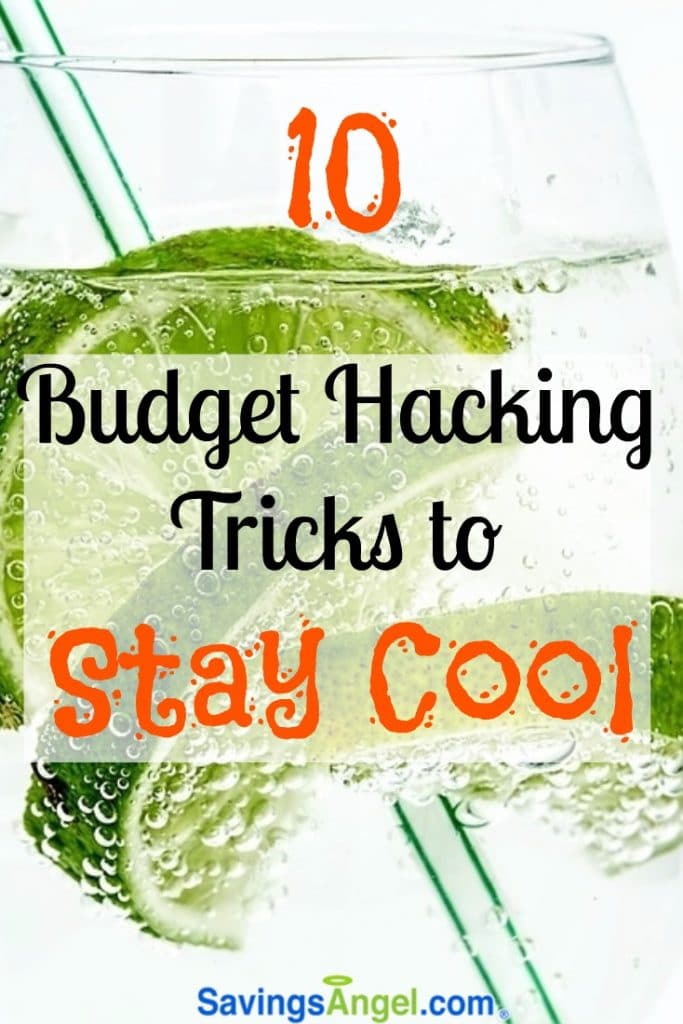 We all need ways to stay cool in summer. Already it's been unseasonably warm in many parts of the country, forcing air conditioners all over to be on. And that can be very costly – up to $1200 more in electricity from now until fall.
We all need ways to stay cool in summer. Already it's been unseasonably warm in many parts of the country, forcing air conditioners all over to be on. And that can be very costly – up to $1200 more in electricity from now until fall.
Some numbers: A mid-sized 2.5-ton central air conditioning system uses about 3500 watts of power an hour. At around 12 cents per kilowatt-hour, it costs 42 cents an hour to run your air conditioning unit – which sounds cheap… until you add it up. That's a $10 a day additional expense – or up to $300 more every month on your electricity bill. By the time the weather cools down again, that could be over $1200 you need to come up with.
One of the #1 ways I've always advocated controlling your cooling bill is to set your thermostat at a higher temperature – so the air doesn't kick on until you absolutely need it. For every degree you raise the thermostat above 78 degrees, it saves 6%-8% on your cooling bill. That can shave off nearly $100 before fall – or $25 a month from your bill.
But how can you stand it until the air kicks on?
10 budget hacks to stay cool in summer:
- Drink a LOT of water. Not only is it healthy, drinking enough water can also keep you cooler. Plenty of water helps your body sweat properly – activating your natural cooling system. Plus, keeping your lips, mouth, and throat cool and moist can go a long way in making your body feel cooler in general, especially when the air feels heavy and hot. One tip: Be sure that it's plain, fresh water – not with any kind of drink mix in it. Having mixes in your water only causes your body to work harder to filter out the extras. If you struggle to drink plain water, add a squeeze of natural fruit juice, such as lemon, lime, orange or strawberry.
- Plan your day. Arrange what you need to accomplish for the day around the weather. Get outdoor activities done early in the morning or late in the evening; then do indoor things during the hottest part of the day, where you can have fans running and be out of the sun.
- Be strategic with fan placement. Fans can make it feel 3-8 degrees cooler than it actually is, so place them where you can feel them and where they can move hot air away. And don't be concerned about the cost of using several fans. The average fan uses less than 100 watts of power an hour – making them much cheaper than running the a/c. That's less than a penny per hour, or the equivalency of running over 35 fans instead of the air conditioning. To put that in plain numbers, you'll spend about $100 before fall, instead of $1200.
If you have the air on, continue to run fans as well. They maximize the movement of cool air, so you can run the a/c for less time. If you can, place a couple fans by the a/c vents to speed the cooling of the house.
- Buy a programmable thermostat or manually control your air conditioning. If you're gone from home during the day, there is no reason to keep it cool. You can either remove a house full of heat one time – or many times throughout the day. Unlike liquids or solids, the temperature of air can be changed fairly quickly because it's much less dense – so it's cheaper to cool the house just before you get home.
When you are home, manually control your air conditioning. Turn it on when you absolutely need it, and off when you don't. Don't just rely on your thermostat. It can read warmer, but you might not feel hot enough to need the a/c. Running it manually can greatly reduce the number of hours the air runs.
- Close doors and drawers. Don't allow cool air to rush into places where no one is. Kick the bad habit of leaving doors open, like closets.
- Choose your clothing and food wisely. Wear lightweight clothing made of material that breathes, like cotton. And avoid foods that can make you feel warmer as you digest, such as spicy or heavy foods.
- Close shades, drapes and blinds. Direct sunlight can raise the temperature in a room by 10-20 degrees.
- Reduce heat from lighting and electronics. Conventional light bulbs put off a lot of heat, whereas compact fluorescent bulbs (CFL) use far less electricity and produce very little heat. Your electronics like televisions, computers, and game systems produce a lot of heat as well – and even in standby mode. Put them on power strips that you can click fully off when not in use.
- Maintenance: Have your a/c unit serviced and change the filter. Make sure the condenser has nothing obstructing it like tall grass or weeds. Inside, make sure your doors and windows are well-sealed.
10. Use water. Sometimes just a quick rinse in the shower or a cold, damp cloth on the back of your neck can get you through.


